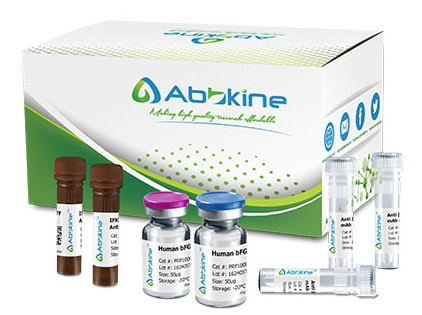WISP1 encodes a member of the WNT1 inducible signaling pathway (WISP) protein subfamily. This gene may be downstream in the WNT1 signaling pathway that is relevant to malignant transformation. It is expressed at a high level in fibroblast cells, and overexpressed in colon tumors. The encoded protein binds to decorin and biglycan, two members of a family of small leucine-rich proteoglycans present in the extracellular matrix of connective tissue, and possibly prevents the inhibitory activity of decorin and biglycan in tumor cell proliferation. It also attenuates p53-mediated apoptosis in response to DNA damage through activation of the Akt kinase. It is 83% identical to the mouse protein at the amino acid level. Alternative splicing of this gene generates 2 transcript variants.
Human WNT1-inducible-signaling pathway protein 1 (WISP1) ELISA Kit employs a two-site sandwich ELISA to quantitate WISP1 in samples. An antibody specific for WISP1 has been pre-coated onto a microplate. Standards and samples are pipetted into the wells and anyWISP1 present is bound by the immobilized antibody. After removing any unbound substances, a biotin-conjugated antibody specific for WISP1 is added to the wells. After washing, Streptavidin conjugated Horseradish Peroxidase (HRP) is added to the wells. Following a wash to remove any unbound avidin-enzyme reagent, a substrate solution is added to the wells and color develops in proportion to the amount of WISP1 bound in the initial step. The color development is stopped and the intensity of the color is measured.
Human WNT1-inducible-signaling pathway protein 1 (WISP1) ELISA Kit listed herein is for research use only and is not intended for use in human or clinical diagnosis. Suggested applications of our products are not recommendations to use our products in violation of any patent or as a license. We cannot be responsible for patent infringements or other violations that may occur with the use of this product.
bio-equip.cn




